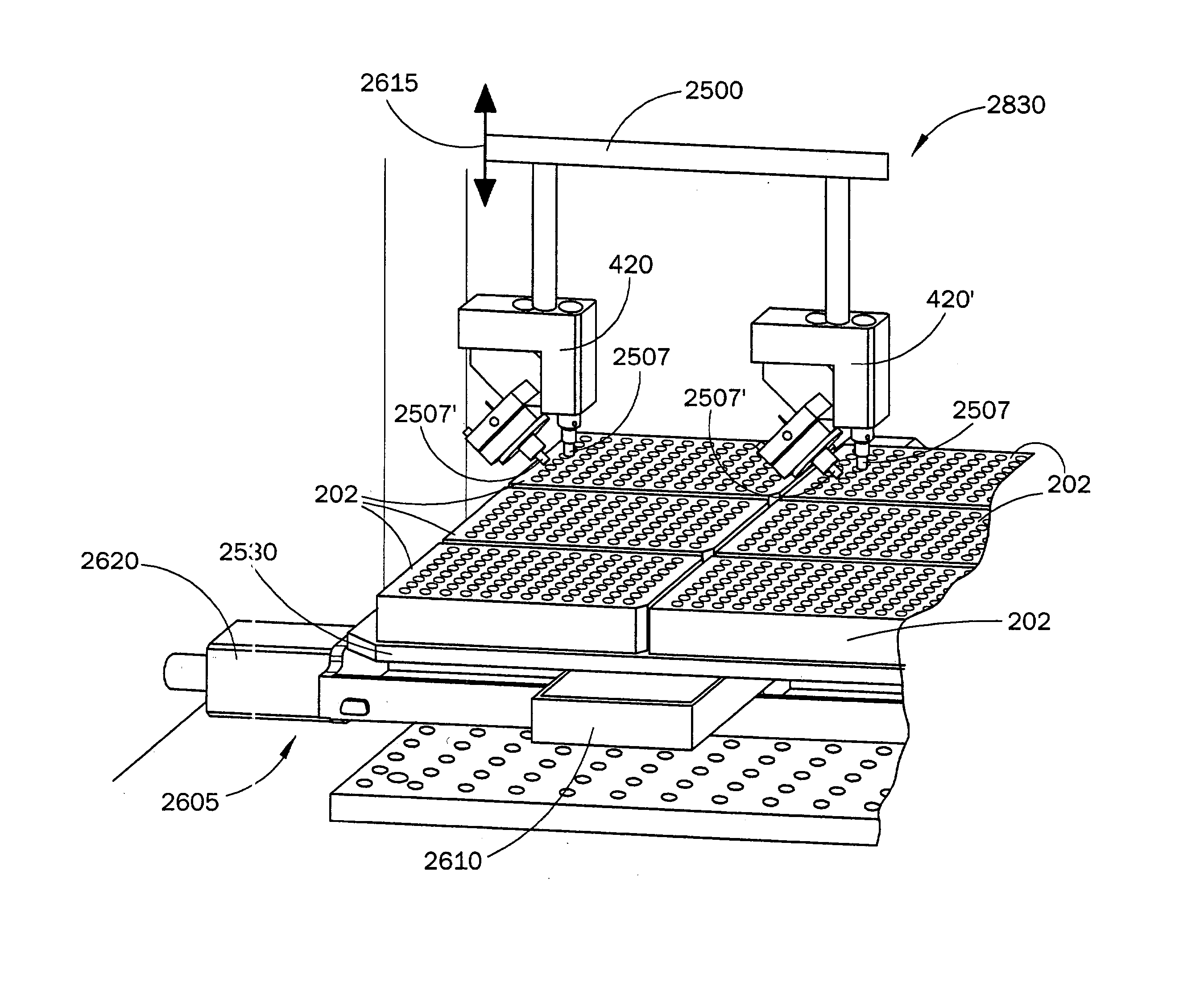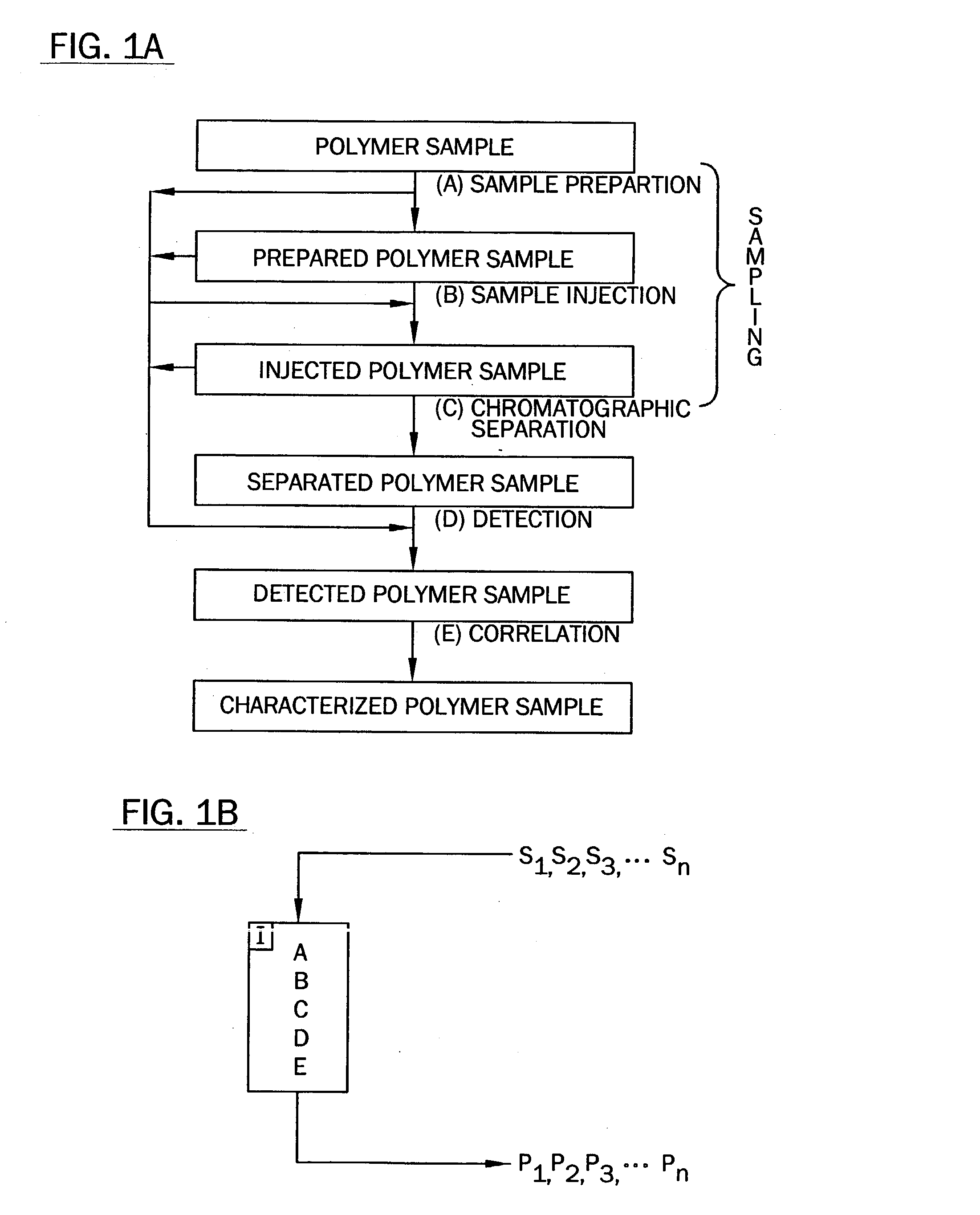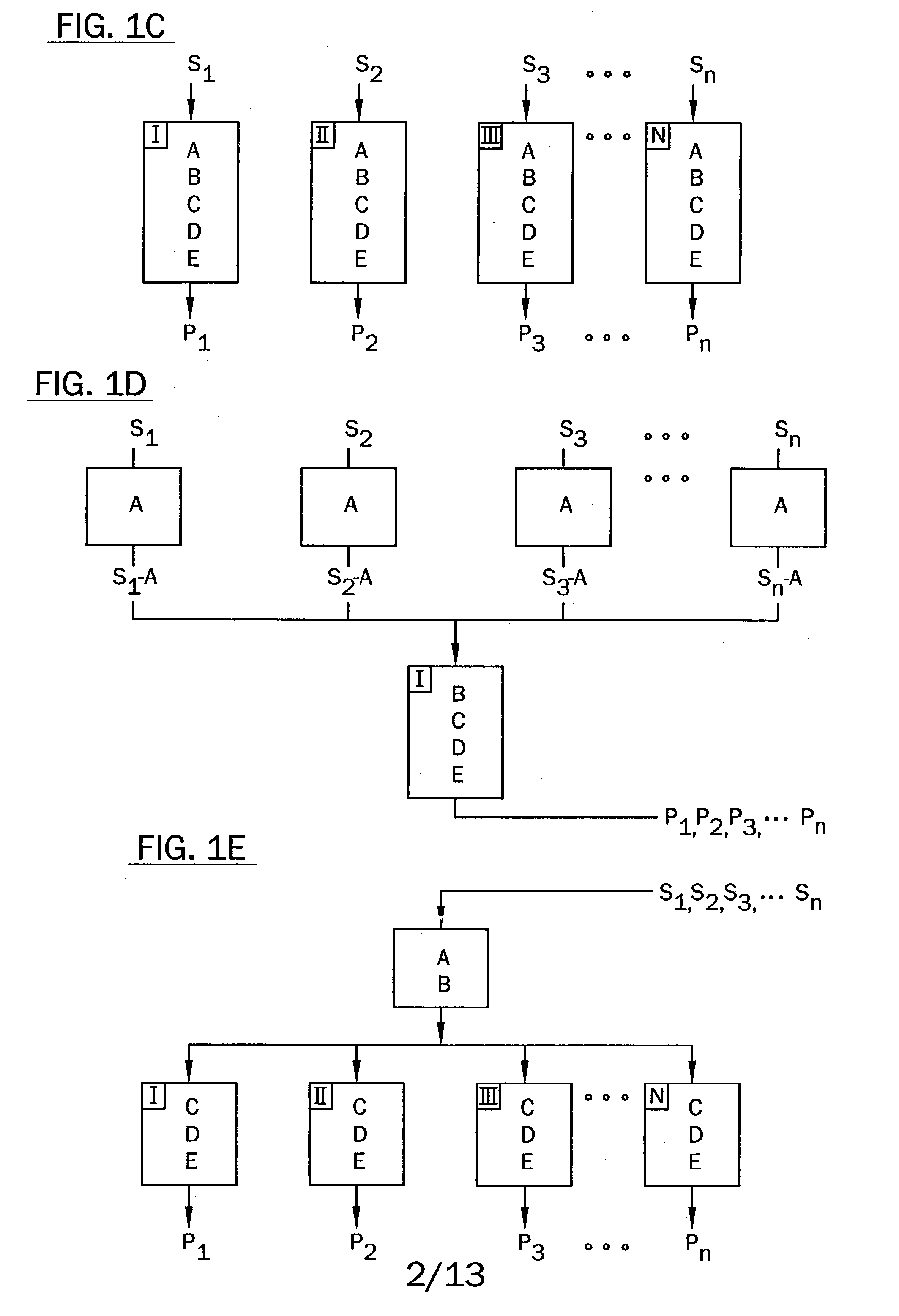Fiber optic apparatus and use thereof in combinatorial material science
a fiber optic apparatus and combinatorial material technology, applied in the field of liquid sample characterization by optical techniques, can solve the problems of limited application of combinatorial techniques to specific research and commercial goals, limited application of combinatorial techniques to the field of polymer science, and inability to predict a priori the physical or chemical properties of a particular material or the precise composition, etc., to facilitate the discovery of commercially important polymers.
- Summary
- Abstract
- Description
- Claims
- Application Information
AI Technical Summary
Benefits of technology
Problems solved by technology
Method used
Image
Examples
example 1
[0182] Parallel Characterization of Polymers with Dynamic Light Scattering
[0183] This example demonstrates the characterization of a 96-member library of emulsion polymers in a parallel manner--using a plurality of dynamic light-scattering (DLS) detector probes. Because the number of DLS probes was less than the total number of samples, the library was evaluated in a serial-parallel (i.e., semi-parallel) manner. The average sample-throughput for characterizing the entire library in this manner was about 5-15 seconds per sample.
[0184] An emulsion library prepared by combinatorial synthesis techniques was prepared and diluted prior to characterization with ultrapure water to a concentration of about 0.001 wt % using an auto-sampler. No filtering was performed on the dispersion before the measurements.
[0185] A parallel DLS system used for characterizing the library of polymer samples was configured substantially as shown in FIG. 2 and described in connection therewith. Briefly, the sys...
example 2
[0192] A probe head comprising two fiber-optic probes were employed to analyze a library of samples in a serial-parallel manner.
[0193] Briefly, a red Helium-Neon laser light (632.8 nm) was coupled from a 10 mW laser into a monomode optical fiber and split into two output fibers with a fiber optics splitter. Each fiber was connectorized to another fiber that is terminated with a GRIN lens with a 10 mm focal length (Princeton Optics, USA). The output power of the laser light for the two channels was adjusted by attenuators.
[0194] The geometry of the apparatus is described for one probe of the probe head as follows. The GRIN lens connectorized end of one of the fibers was mounted into a housing that allows vertical transmission of the light into a microtiter plate. The fiber end was positioned approximately 5 mm from the liquid surface (the rim of the well) of the samples in the microtiter plate. The incident laser beam--for transmitting the laser light--was adjusted slightly off-cente...
example 3
[0203] Analysis of Gas-Liquid Interface
[0204] This example details an analysis of a gas-liquid interface for a sample in an open top container.
[0205] The interface of an open top container is bounded by three-phase contact lines in which the boundary condition takes the form of the Young equation:
.sigma..sub.lg cos .alpha.=.sigma..sub.ls-.sigma..sub.gs (4)
[0206] where .alpha. is the three-phase contact angle and .sigma..sub.ij are the surface tensions of the various liquid, solid and gaseous interfaces. For a given three-phase system the contact angle .alpha. is a material characteristic. For the case of a vial being almost filled, the contact angle is determined by the amount of liquid in the vial. A particular case is a cylindrical vial where the meniscus meets the axis of rotational symmetry. When the effect of gravity is negligible, such a meniscus is part of a sphere. Then the pressure change .DELTA.P across the interface can be described by the Laplace equation 2.sigma. / R=.DEL...
PUM
| Property | Measurement | Unit |
|---|---|---|
| scattering angle | aaaaa | aaaaa |
| diameter | aaaaa | aaaaa |
| diameter | aaaaa | aaaaa |
Abstract
Description
Claims
Application Information
 Login to View More
Login to View More - R&D
- Intellectual Property
- Life Sciences
- Materials
- Tech Scout
- Unparalleled Data Quality
- Higher Quality Content
- 60% Fewer Hallucinations
Browse by: Latest US Patents, China's latest patents, Technical Efficacy Thesaurus, Application Domain, Technology Topic, Popular Technical Reports.
© 2025 PatSnap. All rights reserved.Legal|Privacy policy|Modern Slavery Act Transparency Statement|Sitemap|About US| Contact US: help@patsnap.com



